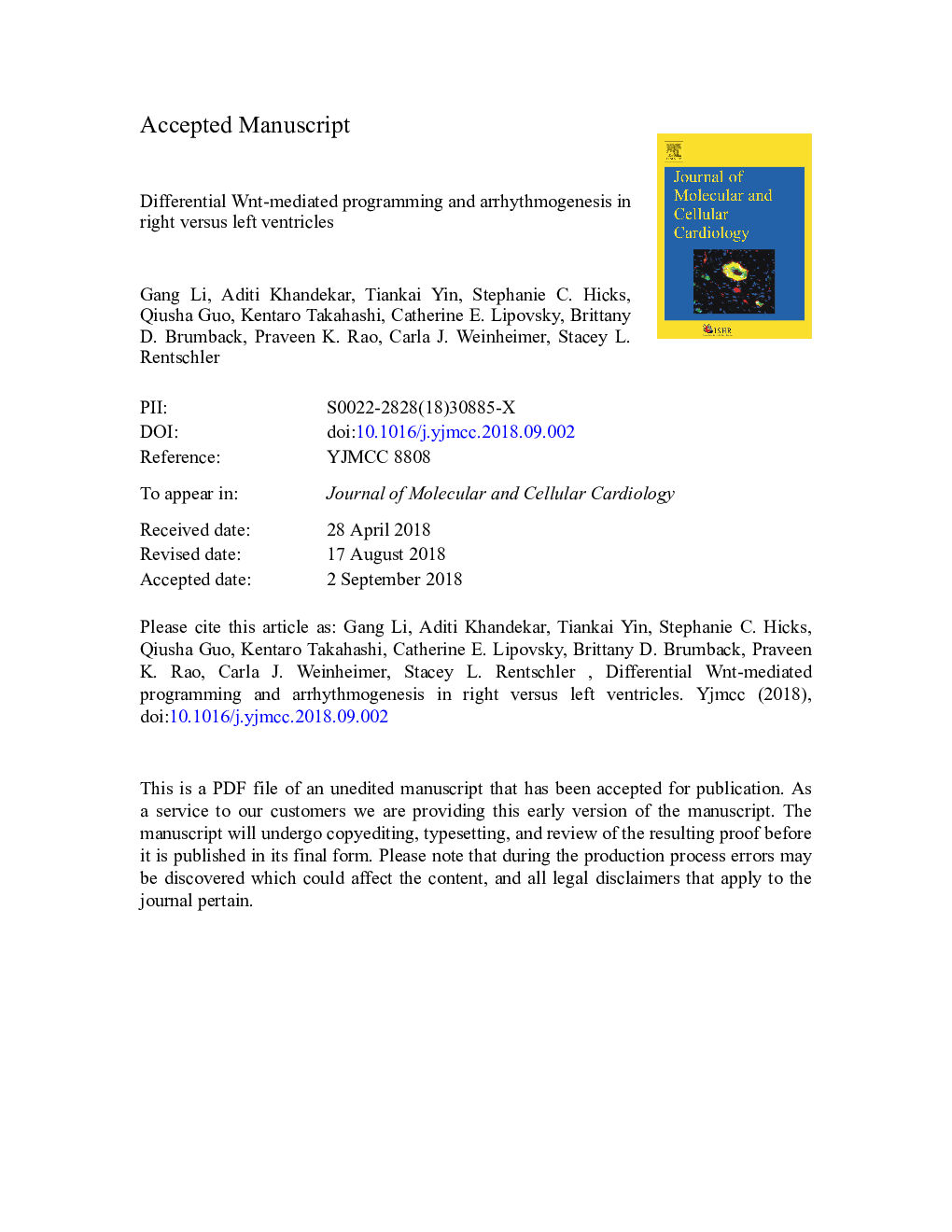| Article ID | Journal | Published Year | Pages | File Type |
|---|---|---|---|---|
| 10143118 | Journal of Molecular and Cellular Cardiology | 2018 | 32 Pages |
Abstract
Several inherited arrhythmias, including Brugada syndrome and arrhythmogenic cardiomyopathy, primarily affect the right ventricle and can lead to sudden cardiac death. Among many differences, right and left ventricular cardiomyocytes derive from distinct progenitors, prompting us to investigate how embryonic programming may contribute to chamber-specific conduction and arrhythmia susceptibility. Here, we show that developmental perturbation of Wnt signaling leads to chamber-specific transcriptional regulation of genes important in cardiac conduction that persists into adulthood. Transcriptional profiling of right versus left ventricles in mice deficient in Wnt transcriptional activity reveals global chamber differences, including genes regulating cardiac electrophysiology such as Gja1 and Scn5a. In addition, the transcriptional repressor Hey2, a gene associated with Brugada syndrome, is a direct target of Wnt signaling in the right ventricle only. These transcriptional changes lead to perturbed right ventricular cardiac conduction and cellular excitability. Ex vivo and in vivo stimulation of the right ventricle is sufficient to induce ventricular tachycardia in Wnt transcriptionally inactive hearts, while left ventricular stimulation has no effect. These data show that embryonic perturbation of Wnt signaling in cardiomyocytes leads to right ventricular arrhythmia susceptibility in the adult heart through chamber-specific regulation of genes regulating cellular electrophysiology.
Keywords
TSST-cell factor/lymphoid enhancer-binding factorSHFConnexin43APDRMPACMLOFGOFNSVTCX43TCF/LEFLoss-of-functionCardiac electrophysiologychromatin immunoprecipitationERPright ventricleleft ventricleVentricular tachycardiaNon-sustained ventricular tachycardiaTranscriptional regulationCardiac developmentaction potential amplitudeeffective refractory periodtranscription start siteConduction velocityHey2gain-of-functionHeart rateCardiomyocyteAction potential durationSecond heart fieldresting membrane potentialAPACHiParrhythmogenic cardiomyopathy
Related Topics
Life Sciences
Biochemistry, Genetics and Molecular Biology
Cell Biology
Authors
Gang Li, Aditi Khandekar, Tiankai Yin, Stephanie C. Hicks, Qiusha Guo, Kentaro Takahashi, Catherine E. Lipovsky, Brittany D. Brumback, Praveen K. Rao, Carla J. Weinheimer, Stacey L. Rentschler,
